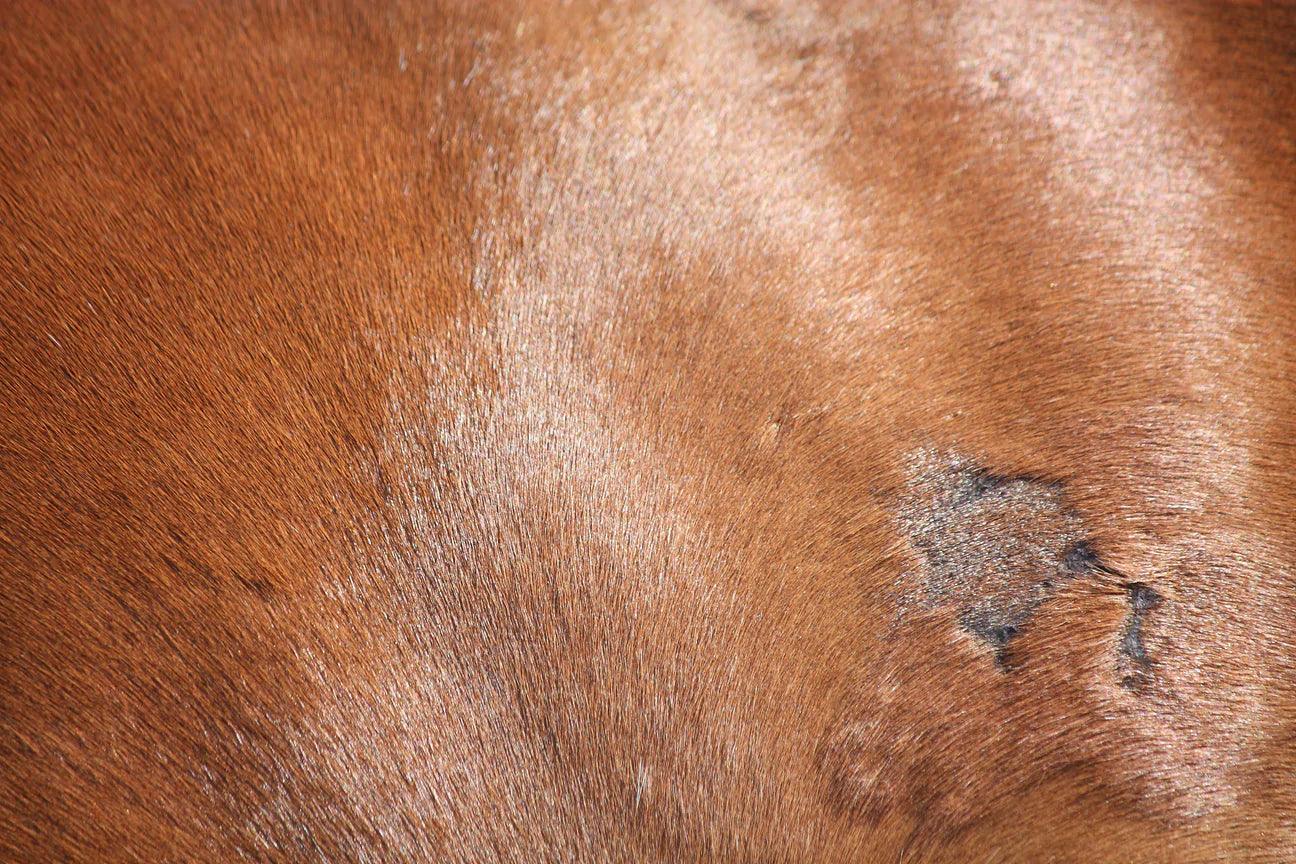In the horse world, skin conditions can escalate extremely quickly! Scratches, rain rot and sweet itch can cause real problems and even lameness if left untreated. Silver Honey® Rapid Wound Repair and Silver Honey® Medicated Shampoo can help you battle all three! Here’s a how-to on beating each type of skin irritation.
Scratches
Scratches, also known as pastern dermatitis, occurs when bacteria invade small cracks in the horse’s skin. Once infection takes hold, the tiny cuts begin to ooze and crust over to form hard, painful scabs. You can treat a mild case of scratches yourself, but severe cases may require veterinary attention.
Treating Scratches
The first rule of treating scratches is to leave the scabs in place. Attempts to remove them are very painful for the horse and may get you kicked. Instead, carefully trim the pastern hair and wash the area with Silver Honey® Medicated Shampoo to help quickly soothe the irritated skin and begin to treat the area. When you’re done, dry the area completely, using a hair dryer if necessary. Finally, apply Silver Honey® Rapid Wound Repair ointment or spray gel. Repeat this every other day and, eventually, the scabs should slide off on their own. If they don’t, removing them gently while the skin is soft after washing can help facilitate the healing process.
Rain rot
This is a bacterial infection that spreads rapidly in a moist environment, causing raised bumps with scabby crusts and tufts of hair that stick up. The crusts will peel off, leaving bare spots and sometimes pus. Rain rot is usually exacerbated by humidity in the spring and summer months.
Treating Rain Rot
Bathe the affected areas with Silver Honey® Medicated Shampoo and follow up with Silver Honey® Rapid Wound Repair ointment or spray gel directly on the affected area. Daily treatment for a week is usually suggested, and peeling off the loose scabs can help in the healing. If the condition doesn’t improve after a week, call your vet. Use of waterproof sheets or blankets, regular grooming and disinfection of clothing worn by affected individuals will help prevent future infections. Make sure to clean your grooming tools, saddle pads, blankets and other communal supplies and not share them while dealing with a rain rot infection.
Sweet itch
The seasonal return of winged pests can trigger skin allergies associated with their bites. Hypersensitivity to the saliva of tiny biting midges (Culicoides spp.), also called sweet itch, is one of the more severe reactions. Any horse can be affected, but Icelandic Horses, Welsh Ponies and Shires are most susceptible because of a genetic predisposition to the condition. The most obvious sign of the allergy is extreme itchiness, with the horse rubbing himself hairless and raw when seeking relief. Areas where the insects like to feed—the chest, midline, crest and top of the tail—are often damaged the worst.
Treating Sweet Itch
Prevention is the best cure for sweet itch. Keeping horses inside when pests are more active—primarily dawn and dusk—helps protect them. Invest in a good fly sheet with a belly band, dependable fly spray, fly boots and a mask with ear nets. Look for garments specifically made for horses with sweet itch. If the horse is kept in a stall, fine-net screens over windows and doors can keep pests out.
If your horse is already dealing with sweet itch and has created a sore from rubbing himself, Silver Honey® Rapid Wound Repair ointment or spray gel can help heal the sore and soothe the surrounding area.





